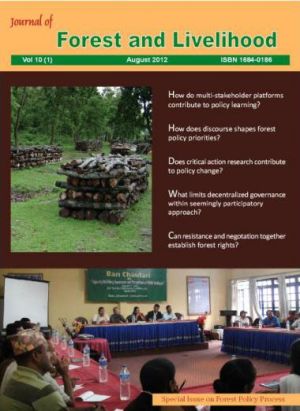Discourse and Discursive Practices Over Timber in Nepal
DOI:
https://doi.org/10.3126/jfl.v10i1.8601Keywords:
discourse, forest policy, timber, policy deliberation, media analysis, community forestry, forest governanceAbstract
Forest sector of Nepal is far from harnessing its economic potential, but witnesses a continuation of deforestation and forest degradation. This is largely because of the limited policy focus on the management of the most important forest product – the timber. Taking timber at the central stage in the debate on forest management, this paper examines the existing stakeholder relations, policy deliberations, programs and everyday practices in Nepal. This paper draws on the country’s policy, legal and regulatory documents, policy deliberations on forest governance, media analysis and everyday practices of forest management. These policies and practices are analysed in relation to environmental discourse, social practices and hegemony in forest sector governance. This paper shows that, while timber occupies a central stage in the government’s decisions, in most of forest-related contestations, and in everyday management decisions, timber management has received only secondary importance in the national forest policy and discourses. The analysis shows that since forest policy discourses have departed from timber, local communities and the government have lost significant incomes from the forest. The marginalization of timber in the policy discourse also encouraged deforestation and forest degradation especially through illegal logging and forest encroachment.
DOI: http://dx.doi.org/10.3126/jfl.v10i1.8601
Journal of Forestry and Livelihood Vol.10(1) 2012 58-73
Downloads
Downloads
Published
How to Cite
Issue
Section
License
CC-BY-NC: This license allows reusers to distribute, remix, adapt, and build upon the material in any medium or format for noncommercial purposes only, and only so long as attribution is given to the creator.





